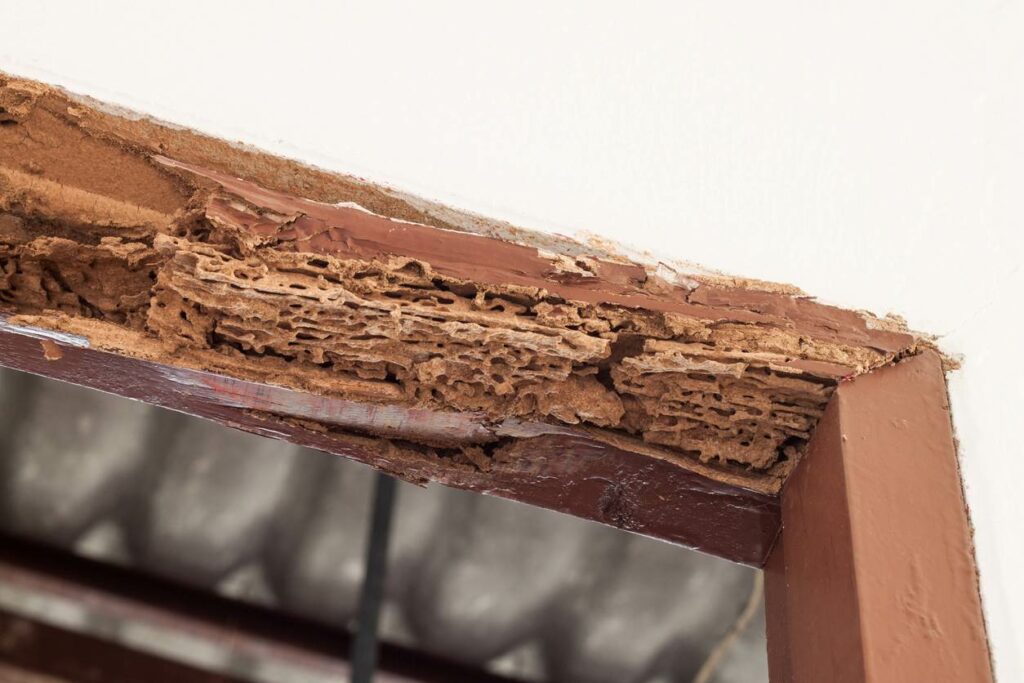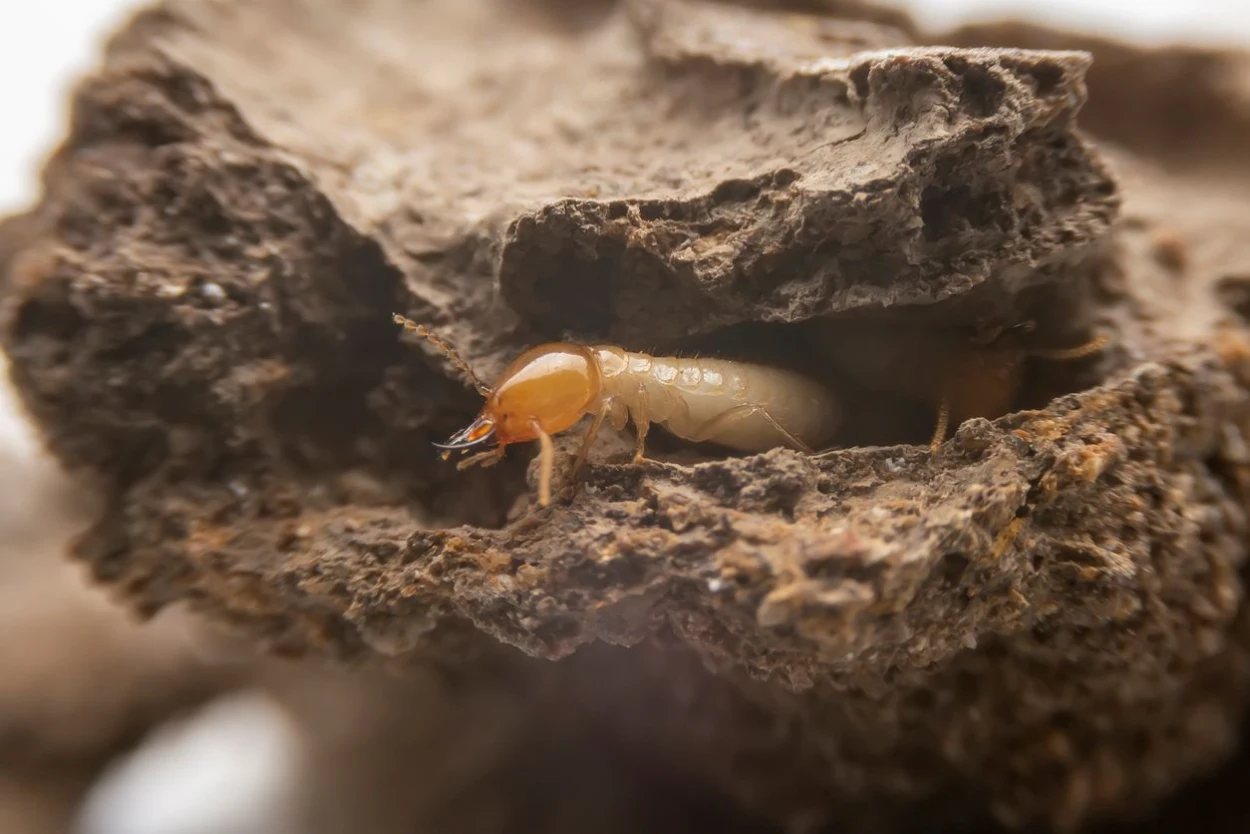There are over 2,700 species of termite worldwide, and any one of them is capable of causing significant damage to your home. The most common types of termites in Arizona are subterranean termites, such as the Western subterranean termite and the desert subterranean termite. These tiny pests live in underground colonies and feed on cellulose-based materials, such as wood, paper, cardboard, and the structure of your home.
These highly destructive insects cause damage by tunneling through wood, eating away at its integrity. While the damage inflicted by termites can vary depending on the species and the size of the colony, it is always a cause for concern. In severe cases, termites can compromise the structural stability of your home, leading to costly repairs and even collapse. Termites can cause significant damage in a relatively short period, so early detection is our top priority.
In addition to structural damage, termites can also cause cosmetic damage to your home, such as bubbling or peeling paint, hollow-sounding termite-infested wood, and sagging floors or ceilings. These signs of termite activity may indicate a larger infestation lurking beneath the surface, necessitating immediate action to prevent further damage.

Costly Consequences of Termite-Infested Wood and Other Damage
The impact of termite damage can be severe, both financially and emotionally. Left unchecked, termites can wreak havoc on homes and businesses alike, leading to costly repairs and diminishing property values.
One of the most significant consequences of termite-infested wood is the potential compromise of structural integrity. When termites infest load-bearing elements of a building, such as support beams and floor joists, they weaken the structure and increase the risk of collapse. This can pose a serious safety hazard and would likely require extensive and expensive repairs to resolve.
Let’s not forget that termite infestations can lead to secondary issues such as mold and water damage. As termites tunnel through wood, they create moisture-rich environments conducive to mold growth. This can result in mold infestations that hurt indoor air quality and pose health risks to you and your guests. The presence of moisture from termite activity can also attract other pests, worsening the problem and increasing the scope of damage.
Recognizing the Signs of a Termite Infestation
As these elusive pests may remain hidden within the walls and foundations of your property, they leave behind subtle clues that keen observers can identify. Mud tubes, constructed by subterranean termites to navigate across surfaces and maintain moisture levels, is one such indicator of their presence. These pencil-thin structures, often found along walls and foundations, serve as protective pathways for termites as they forage for food.
Another unmistakable sign that your home is infested with termites is the emergence of swarming termites, known as alates, during certain times of the year when the moisture and temperature are ideal for reproduction. These winged insects are drawn to light sources and warm temperatures, and homeowners may also notice hollow-sounding wood when tapping on wooden surfaces such as walls, floors, and furniture. Termites devour wood from the inside out, leaving behind thin layers of wood on the surface, resulting in a hollow sound upon inspection.
Additionally, the presence of discarded wings near entry points or light sources is a dead giveaway of termite swarmers shedding their wings after mating. And like many other pests, the accumulation of termite droppings, known as frass, near termite galleries or entry points indicates active feeding and nesting activity. These wood-colored pellets resemble sawdust and signify an ongoing termite infestation in your home.
Understanding the Seasonal Behavior of Termites
Termites in Arizona exhibit seasonal behavior patterns influenced by temperature, humidity, and food availability. In the summer and spring, termites become more active as temperatures rise and food sources become more abundant. Colonies expand their foraging range during this period and increase their feeding activity, leading to a greater risk of your home being infested with termites.
Conversely, during the fall and winter, termites may retreat deeper underground or into protected areas to conserve energy and maintain moisture levels. However, it is important to note that termites can remain active year-round in Arizona’s temperate climate, making continuous vigilance and proactive pest control measures essential for preventing infestations.
Termite Prevention and Elimination Strategies with Burns Pest Control

When it comes to protecting your home against termites, early detection is your best method to prevent a full invasion. As you keep a keen eye out for the signs of a termite infestation or termite damage, be ready to reach out to Burns Pest for prompt elimination.
Using advanced detection methods such as thermal imaging and moisture meters, we can pinpoint termite colonies’ locations and develop customized treatment plans around your home’s unique layout and structural needs. After they’ve been removed with our specialized Altriset® liquid termiticide, we’ll seal the entry points in and around your home to create a barrier that keeps your property protected.
Request a quote for recurring termite treatments with Burns Pest Elimination or explore our services today to protect your home from costly termite damage.
